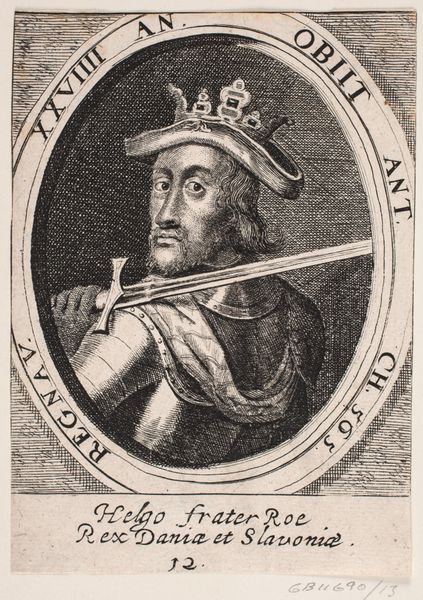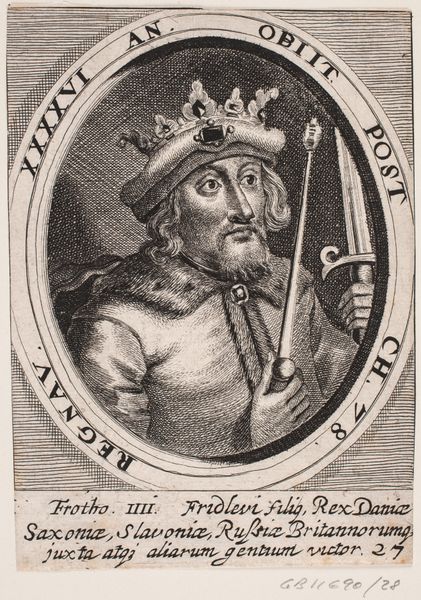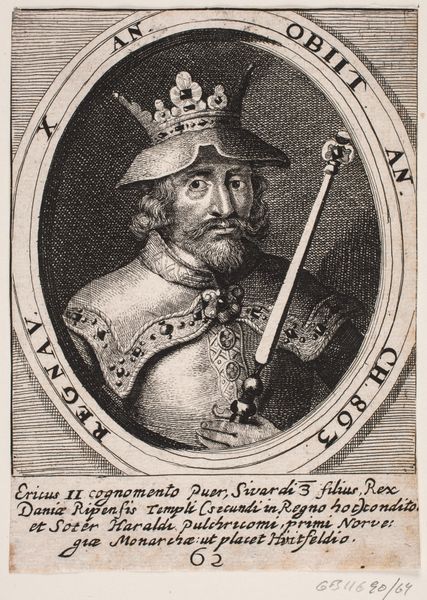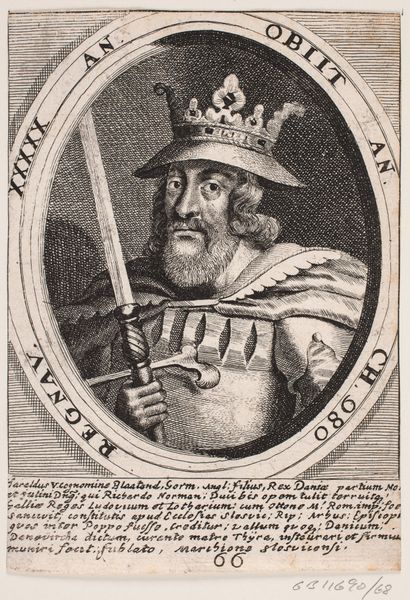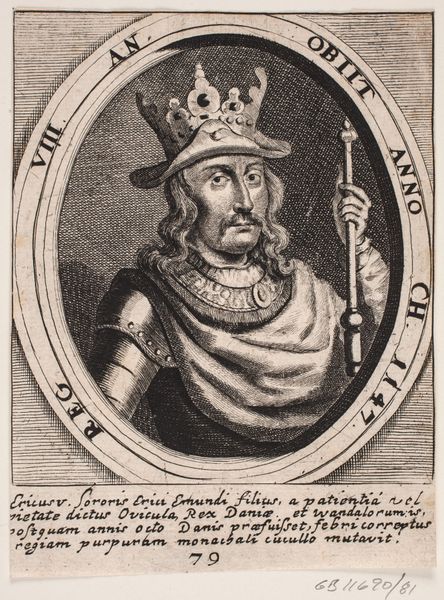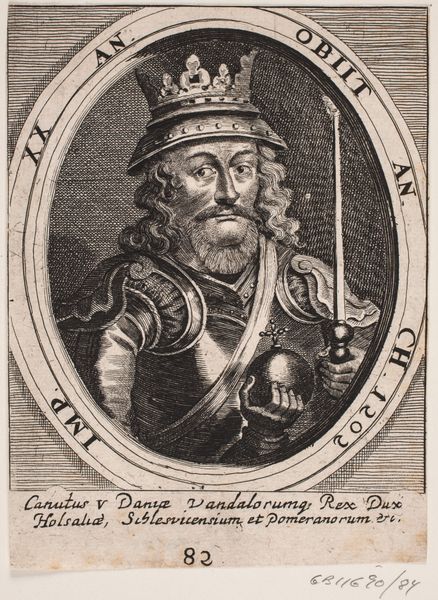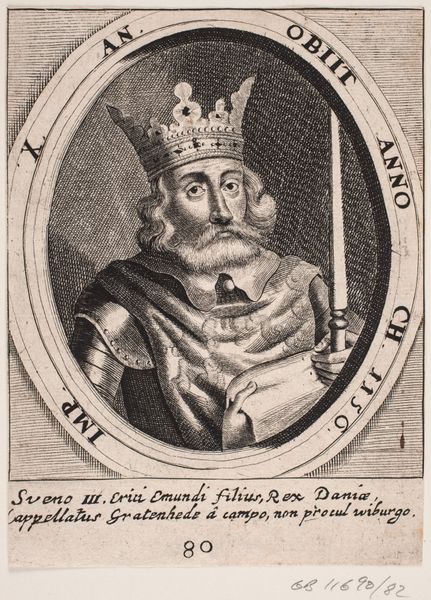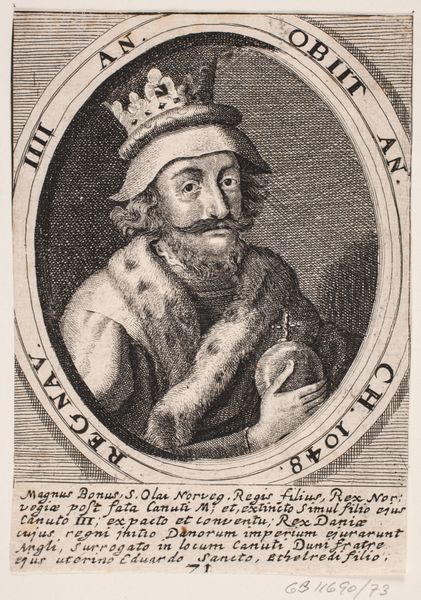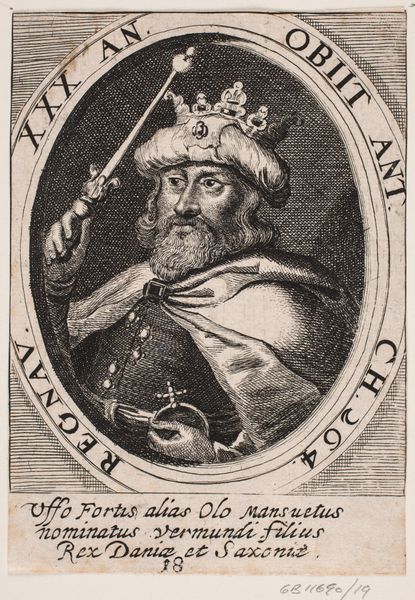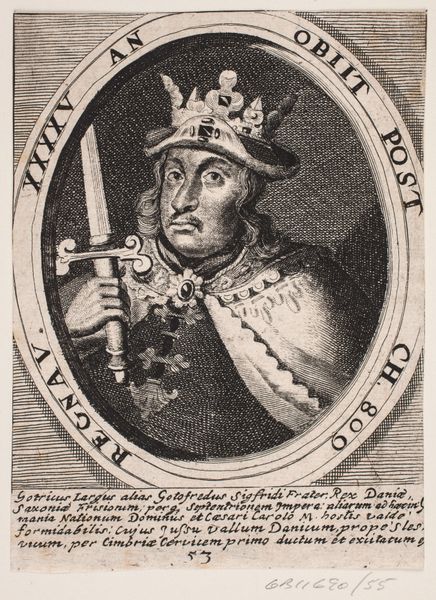
print, engraving
#
baroque
# print
#
history-painting
#
engraving
Dimensions: 140 mm (height) x 100 mm (width) (bladmaal)
Editor: We’re looking at a print from 1646 entitled *Rolf Krake*. It's an engraving, and it seems to depict a regal figure. There's a formality to it, a starkness even, that the medium seems to amplify. What’s your take on this image? Curator: It's a fascinating piece in terms of how history is constructed and visually disseminated. Prints like this were powerful tools. They allowed for the standardization and circulation of imagery, solidifying specific narratives, especially for figures like royalty. Notice the text: "Rolf Krake Helgonis filius, Rex Dania Suecia Slavonia," clearly claiming territories and lineages. Do you think this is neutral record-keeping or something else? Editor: I see what you mean. It definitely reads as a claim, a sort of visual propaganda even. So, are you saying that this image might be less about historical accuracy and more about... asserting power? Curator: Precisely. Think about the Baroque style – its inherent drama and idealization – and consider how those qualities are used here. The engraving aims for a certain grandeur, irrespective of whether Rolf Krake actually looked like this or held these lands. It's a performance of power meant to be reproduced and distributed. Who was the intended audience for this? How might they interpret it? Editor: So, the print acts as a political statement, shaping public perception of a historical figure? That’s such a different perspective than just seeing it as a portrait! Curator: Exactly! We must always remember the social and political roles these artworks performed. Thinking about the artist as a public voice and their work as shaping and responding to the society of the time gives another depth to understanding history through Art History. Editor: I'll never look at historical portraiture the same way again!
Comments
No comments
Be the first to comment and join the conversation on the ultimate creative platform.
